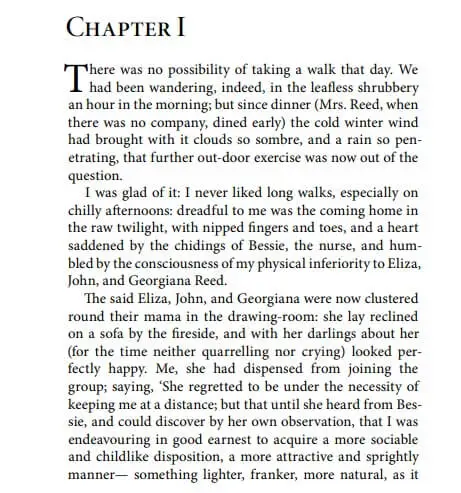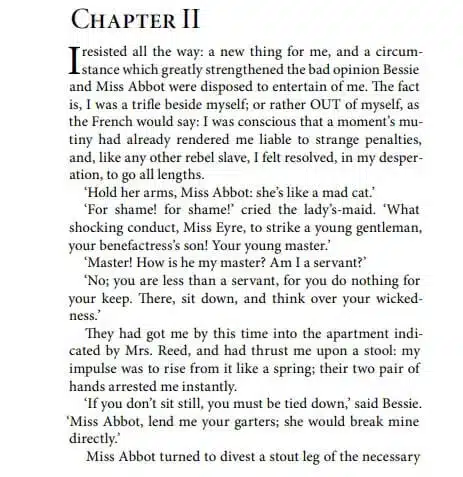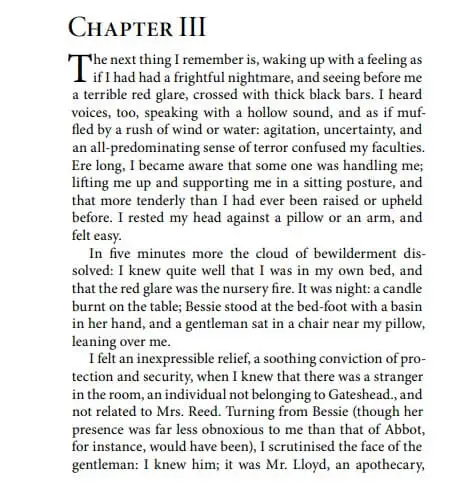Introduction
“Jane Eyre PDF,” written by Charlotte Brontë and published in 1847, is a classic novel that blends romance, mystery, and a deep exploration of social issues. Following the journey of Jane Eyre, an orphan who rises from humble beginnings, the novel captivates readers with its intense emotional narrative and groundbreaking themes of self-worth, morality, and gender equality.
| Name of PDF | Jane Eyre |
|---|---|
| No Pages | 691 |
| Author | Charlotte Brontë |
| Published | October 19, 1847 |
| Language | Engish |
| Genres Characters | Romance novel, Novel, Gothic fiction, Bildungsroman Edward Rochester, Jane Eyre, Bertha Mason |
| Size | 1.0 MB |
| Chek, latest edition |
Table of Contents

About Charlotte Brontë
Charlotte Brontë was an English novelist and one of the three Brontë sisters, known for her remarkable storytelling and pioneering spirit. Under the pen name Currer Bell, she presented “Jane Eyre” as a bold, unique narrative, breaking away from traditional Victorian norms.
Plot Summary
Overview of the Main Storyline
“Jane Eyre” tells the story of a young orphan girl who faces a series of hardships but gradually rises to independence and finds love. Set in 19th-century England, Jane’s journey begins at her abusive aunt’s home, progresses to a harsh boarding school, and later finds her employed as a governess at Thornfield Hall.
Key Events and Turning Points
From her aunt’s cruel treatment to the challenges at Lowood School, each stage of Jane’s life reflects her strength and resilience. A turning point comes when she meets Edward Rochester, Thornfield’s master, and they develop a complex, passionate relationship that forces both characters to confront inner demons and societal expectations.
Characters in “Jane Eyre Novel”
Jane Eyre: The Protagonist
Jane Eyre is a strong-willed, independent woman who seeks love and belonging while remaining true to her values. Her resilience and morality make her a compelling character who resonates with readers as a symbol of self-respect and equality.
Edward Rochester: The Byronic Hero
Mr. Rochester, a brooding and mysterious figure, embodies the Byronic hero—a romantic yet flawed man whose tragic past shapes his complex character. His relationship with Jane is both tender and turbulent, revealing layers of love, secrecy, and redemption.
Helen Burns: A Friend and Influence
Helen Burns, Jane’s friend at Lowood, embodies faith and patience. Through her gentle guidance and faith, she teaches Jane valuable lessons on forgiveness and resilience, leaving a profound impact on her.
St. John Rivers: A Complex Ally
St. John, Jane’s cousin and a devout missionary, represents duty and sacrifice but contrasts with Jane’s ideals. His marriage proposal forces Jane to choose between passion and duty, further defining her character.
Themes in “Jane Eyre”
Love and Passion
The novel explores different facets of love—from friendship to romantic attachment, showing how passion can be both uplifting and destructive. Jane’s love for Rochester becomes a means of self-discovery, challenging social and personal boundaries.
Social Class and Status
“Jane Eyre” critiques the rigid class structure of Victorian England, showcasing Jane’s struggle against social constraints. Her relationship with Rochester highlights issues of wealth, class, and equality in a society divided by status.
Religion and Morality
Religious themes are prominent throughout the novel, with characters like Helen and St. John representing various religious ideologies. Brontë uses these figures to explore moral questions and the impact of faith on individual choice.
Gender and Feminism
Ahead of its time, “Jane Eyre” presents strong feminist themes. Jane’s insistence on independence and equality in love, work, and society marks her as a precursor to modern feminist thought.

Symbolism in “Jane Eyre”
The Red Room
The Red Room, where young Jane is punished, symbolizes her repression and isolation, setting the tone for her struggles with authority and independence throughout the novel.
Fire and Ice
Fire and ice represent passion and restraint in the novel. Jane’s fiery nature is counterbalanced by her cool judgment, a balance she learns to navigate in her relationship with Rochester.
Birds and Freedom
Brontë uses bird imagery to convey Jane’s yearning for freedom and self-expression. Jane’s comparison of herself to a “poor, orphaned bird” captures her desire for independence and autonomy.
Jane Eyre as a Feminist Novel
Pioneering Independence and Equality
Through Jane, Brontë advocates for women’s independence and equality, emphasizing self-respect and moral integrity over societal expectations. Jane’s journey reflects her resistance to conform to Victorian standards, making the novel a feminist milestone.
Rejection of Social Norms
Jane’s refusal to marry St. John or live with Rochester without marriage shows her commitment to personal integrity. She challenges the roles and restrictions imposed on women in her era.
The Gothic Elements in “Jane Eyre PDF novel”
Mysterious and Dark Settings
Thornfield Hall, with its dark corridors and mysterious happenings, enhances the gothic atmosphere. Brontë uses these settings to reflect Jane’s inner turmoil and suspense in her relationship with Rochester.
Supernatural Elements
Gothic elements, like Jane’s eerie premonitions and the mysterious laughter echoing in Thornfield, add intrigue and deepen the novel’s psychological intensity.
Psychological Complexity
The novel dives into the inner workings of its characters, particularly Jane and Rochester. This psychological depth makes the story feel real and complex, engaging readers on a deeper level.
Romanticism and Realism in “Jane Eyre PDF book”
“Jane Eyre” combines romantic and realistic elements, blending poetic imagery with grounded social commentary. The novel’s rich symbolism and grounded portrayal of character struggles allow it to resonate with readers on multiple levels.
Literary Style of Charlotte Brontë
Brontë’s writing is characterized by rich, descriptive prose and emotional depth. Her ability to portray complex characters and evoke sympathy for the underdog makes her style unique and timeless.
Historical Context and Influence
Set during the Victorian era, “Jane Eyre” challenges contemporary norms about class, gender, and morality. Its enduring themes continue to resonate, influencing countless works in literature and beyond.
Impact on Literature and Culture
“Jane Eyre” has inspired adaptations in film, television, and stage, and remains a staple in literature courses. Its exploration of love, independence, and self-worth has made it a cultural touchstone.
Adaptations of “Jane Eyre PDF novel”
The novel has been adapted into various films and television series, each bringing a unique perspective to Brontë’s work. These adaptations reflect the timeless appeal of Jane’s story.

Criticisms and Controversies
While celebrated, “Jane Eyre” has faced criticism for its portrayal of race, especially regarding Rochester’s wife, Bertha Mason. Some argue the depiction reflects Victorian prejudices, sparking debates about cultural representation.
Conclusion
“Jane Eyre” is a powerful novel that defies traditional boundaries, offering a passionate exploration of love, independence, and morality. Brontë’s work remains relevant for its strong feminist undertones and its appeal to readers seeking a story of resilience and self-discovery.
FAQs about Jane Eyre PDF
What makes “Jane Eyre” a feminist novel?
“Jane Eyre” showcases a woman’s journey toward independence, emphasizing her need for self-respect and equality, which reflects feminist themes.
How does Brontë use symbolism in “Jane Eyre”?
Brontë uses symbols like the Red Room, fire, and birds to convey Jane’s emotions, struggles, and desires for freedom.
What role does religion play in the novel?
Religion shapes several characters, influencing their morals and decisions, and challenges Jane’s own views on faith and morality.
How does “Jane Eyre” fit into the Gothic genre?
The novel includes dark, mysterious settings and supernatural elements typical of Gothic literature, enhancing its suspenseful atmosphere.
What is the significance of the character Helen Burns?
Helen represents forgiveness and resilience, impacting Jane’s life by teaching her lessons in compassion and faith.
Is Jane Eyre a dark novel?
A gothic masterpiece of tempestuous passions and dark secrets
Is Jane Eyre a love story?
The book has become a touchstone for passionate love
Why is Jane Eyre so famous?
It was written in the first person and often addressed the reader, creating great immediacy
What is the story of Jane Eyre about?
Jane, a seemingly plain and simple girl as she battles through life’s struggles





